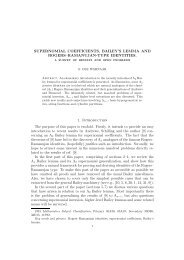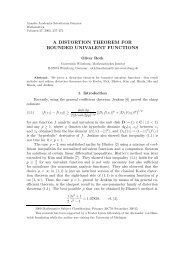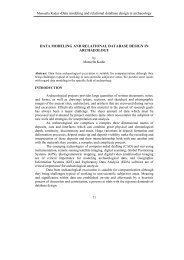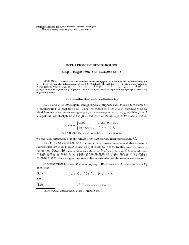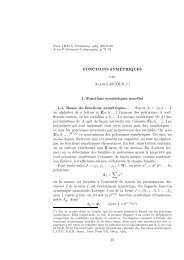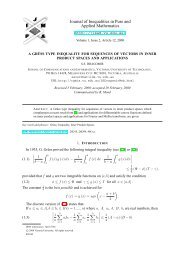CHAPTER 6 TWO-COLORED WALLPAPER PATTERNS 6.0 ...
CHAPTER 6 TWO-COLORED WALLPAPER PATTERNS 6.0 ...
CHAPTER 6 TWO-COLORED WALLPAPER PATTERNS 6.0 ...
You also want an ePaper? Increase the reach of your titles
YUMPU automatically turns print PDFs into web optimized ePapers that Google loves.
6.1.3 No color-reversing translations. The only wallpaper<br />
pattern type simpler than the p b<br />
′ 1 is the one that has the only<br />
isometry common to all wallpaper patterns (color-preserving<br />
translation) and nothing else: this is the p1 type, familiar of<br />
course from section 4.1. But how about a p1 pattern that, just like<br />
the p2 and pg patterns in <strong>6.0</strong>.3, looks like a ‘genuine’ two-colored<br />
pattern, having black and grey in perfect balance with each other?<br />
Here is such an example:<br />
Fig. 6.8<br />
p1<br />
We leave it to you to compare this pattern to the p b<br />
′ 1 pattern of<br />
figure 6.1 and verify its p1 classification: notice in particular that<br />
there are no ‘underlying’ reflections or glide reflections; or, if you<br />
wish, they were dead before they were born, ruled out by structure<br />
and position rather than inconsistency with color.<br />
6.2 pg types (pg, p b<br />
′ 1g, pg′ )<br />
6.2.1 Those elusive glide reflections. While the pattern in figure<br />
6.2 clearly has vertical and horizontal color-preserving reflections<br />
and in-between color-reversing glide reflections, as well as 180 0



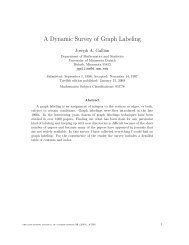


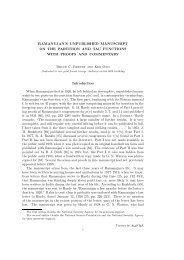
![(.,t ] and [s, .) , where [s,t ] = {s' GT; s ¤ s' ¤ t} , (.,t ] = {s' GT; s' ¤ t} and ...](https://img.yumpu.com/43303393/1/184x260/t-and-s-where-st-s-gt-s-a-s-a-t-t-s-gt-s-a-t-and-.jpg?quality=85)
